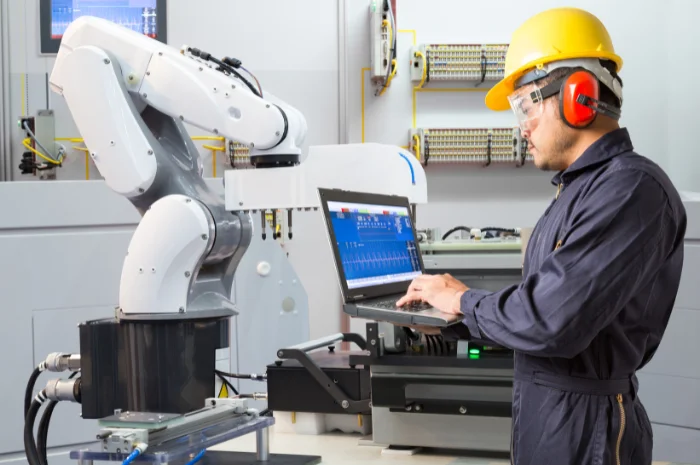Cloud migration isn’t what it used to be. A few years ago, most companies moved to the cloud to cut costs or escape old systems. Today, it’s about something bigger,staying flexible in a fast-changing world.
By 2026, the cloud will look very different. AI will play a bigger role in managing workloads and predicting demand. Sustainability will matter more, with businesses being asked to track and report their cloud carbon footprint. And hybrid setups ,mixing on-prem, multi-cloud, and edge, will become the norm, not the exception.
That means older migration strategies may not work anymore. A simple “lift and shift” won’t help if your workloads can’t adapt or scale efficiently. The focus now is on smart cloud migration ,moving in a way that supports long-term growth, security, and cost control.
This guide will walk you through how the cloud landscape is shifting, what’s coming in 2026, and the 10 best cloud migration strategies to prepare for it. You’ll also learn how the classic 7R framework still fits in ,and where it needs to evolve.
If you’re planning a move or improving your setup, this is the time to rethink how you migrate, not just to the cloud, but for the future.
The State of Cloud Migration Today

Cloud adoption has become the norm for most large companies. The difference now lies in how they’re using it and what problems they’re trying to solve.
A recent Flexera 2025 State of the Cloud Report shows that 94% of enterprises use some form of cloud service. That number isn’t surprising anymore ,what’s interesting is how priorities are shifting. Businesses aren’t asking, “Should we move to the cloud?” They’re asking, “How do we manage it better?”
-
Costs are becoming the main pain point.
According to Flexera, 84% of organizations struggle to manage cloud spending. That’s a big jump from just a few years ago. Companies are realizing that moving to the cloud doesn’t automatically save money ,it can even raise costs if usage isn’t tracked closely. Many teams now focus on budgeting, forecasting, and building FinOps practices to control cloud waste.
-
Hybrid and multi-cloud setups are becoming standard.
Around 70% of enterprises now use a mix of public and private clouds. This approach gives them flexibility ,keeping sensitive data on private infrastructure while running other workloads on public providers. It also helps reduce dependency on a single vendor. But this model brings its own challenges: managing compatibility, latency, and cost visibility across multiple environments.
-
New factors are influencing migration decisions.
Cloud strategies today aren’t just about performance or uptime. Other forces are shaping them too:
- Sustainability: Over half of organizations now have, or are building, cloud sustainability programs to measure and reduce carbon impact (Flexera, 2025).
- Repatriation: About 1 in 5 companies have moved certain workloads back on-premises, often for better cost or control.
- AI-driven workloads: Generative AI is creating heavier data and compute demands, pushing companies to rethink how and where their applications live.
Most enterprises are already in the cloud, but not all are doing it effectively. The easy migrations are done. What remains are the complex, layered workloads that demand careful planning ,especially as new compliance, cost, and sustainability pressures grow.
Before you plan your next migration, it’s worth pausing to understand where the cloud is heading in 2026 ,because the rules are changing again.
What’s Changing in 2026 ,and Why Does It Matter
If 2025 was about tightening control, 2026 will be about making the cloud smarter and more responsible. The focus is shifting from “migrate and manage” to “predict and optimize.” The tools, regulations, and expectations around cloud use are all evolving ,fast.
Here’s what’s coming your way.

1. AI will take a bigger role in cloud management
Cloud platforms are starting to use AI to automate resource scaling, detect inefficiencies, and even prevent downtime. Gartner predicts that by 2026, over 60% of cloud operations will involve AI-based automation, up from less than 30% in 2023. That means you’ll be relying less on manual monitoring and more on systems that learn your usage patterns and adjust automatically.
The upside: fewer surprises, better performance, and cleaner cost data.
The challenge: you’ll need people who understand both AI and cloud governance ,not just one or the other.
Also Read: 5 Practical Strategies and Role of AI in Modernization
2. Sustainability targets will become non-negotiable
Cloud sustainability is no longer a “nice to have.” It’s becoming a reporting requirement. IDC notes that by 2026, 75% of large organizations will need to report on the environmental impact of their IT operations, including cloud usage. That means migrations can’t focus only on cost or speed. You’ll need to consider how workloads affect your overall carbon footprint and whether your provider supports energy-efficient regions or green compute options.
3. Hybrid and edge computing will merge into everyday architecture
The gap between data center, edge, and cloud will continue to shrink. According to Gartner, over half of enterprise data will be created and processed outside traditional data centers by 2026.
This shift will change how you plan migrations. Instead of “moving everything to one cloud,” companies will design distributed systems where data moves closer to where it’s used. It also means migration plans will need to cover devices, sensors, and smaller compute nodes ,not just big workloads.
4. Vendor-agnostic architectures will gain momentum
Locking into one cloud provider used to make sense for simplicity. Now it can limit flexibility and cost control. Many enterprises are investing in cloud-agnostic architectures, using containers and Kubernetes to stay portable. This approach could reduce long-term cloud costs by 20–30% by 2026 while improving resilience.
5. Compliance and data sovereignty will tighten
Governments worldwide are updating privacy and data residency laws. In regions like the EU, GCC, and India, regulations increasingly demand that data stay within borders or meet specific encryption standards.
By 2026, this will heavily influence how and where migrations happen. Choosing regions, providers, and storage models will become a compliance-driven decision ,not just a technical one.
Why this matters:
All these shifts point to one thing ,migration is no longer just a technical project. It’s a business strategy tied to cost, compliance, sustainability, and competitive readiness.
Enterprises that adapt early will find themselves better prepared for the demands of AI-heavy workloads, greener regulations, and multi-cloud realities. Those that delay will spend more time reacting than improving.
The 10 Best Cloud Migration Strategies for 2026
![]()
As cloud ecosystems mature, migration strategies are becoming more layered. What worked five years ago doesn’t always fit today’s mix of hybrid setups, AI workloads, and tighter budgets. Here are ten strategies that experts and research reports point to as the most effective for 2026.
1. Prioritize a workload-by-workload approach
Avoid moving everything at once. As per various reports, businesses that migrate in phases achieve 30% faster stabilization and 20% lower unplanned downtime. Start with less critical workloads to test your process. Once the model is stable, expand to core systems.
2. Use the 7R Framework as a foundation
They help you map each system to a practical migration path, whether to rehost, refactor, or retain. Modern cloud consulting experts still rely on the 7R model but often mix methods. For instance, rehosting a workload now and refactoring it later for better performance or AI integration. We will discuss more about the 7Rs of cloud migration in the next section.
3. Modernize databases before moving
Data is the most sensitive and costly part of migration.Updating databases before migration helps avoid compatibility issues later. According to the 2025 IDC Cloud Migration Report, 65% of failed migrations stem from outdated or unoptimized databases.
Shifting to managed database services (like Amazon RDS, Azure SQL, or Cloud SQL) reduces admin work and boosts resilience.
4. Focus on security design, not just security tools
In 2026, cloud security is less about products and more about design.Plan your migration architecture with zero-trust principles, encryption-by-default, and automated access control.
5. Adopt automation for migration tracking
Manual tracking creates gaps. Using migration automation tools AWS Migration Hub, Azure Migrate, or Google Cloud Migrate, helps teams monitor progress, dependencies, and rollback plans.
This also improves auditability and reduces human error, which is key for compliance-heavy industries. If your team is not familiar with any of these tools, consider hiring AWS experts.
6. Integrate cost visibility from day one
Cloud cost overrun remains the most cited post-migration regret. FinOps Foundation’s 2025 report found that 79% of enterprises struggle with ongoing cloud spend visibility.
Embedding cost management dashboards during migration (rather than after) helps IT and finance work from the same data.
7. Design for hybrid and multi-cloud flexibility
No one provider covers everything. Designing your workloads for multi-cloud deployment ensures that you can switch or combine services without full rework.
Cloud consulting experts now recommend using open standards, container orchestration (like Kubernetes), and policy-based management for flexibility.
8. Create a rollback and resilience plan
Migration success isn’t about zero issues, it’s about recovery speed. Always maintain a tested rollback path and automated snapshots. Enterprises that simulate failure scenarios ahead of migration face fewer disruptions later, according to Forrester’s 2025 Cloud Transformation Survey.
9. Include sustainability as a decision factor
Sustainability is not just a corporate talking point anymore. Cloud providers now publish carbon intensity data per region. Choosing regions or workloads that minimize carbon emissions can reduce cost in the long term and align with new ESG compliance standards expected in 2026.
10. Partner with cloud consulting experts early
The right partners make migration smoother. Cloud and DevOps experts bring cross-platform knowledge, help assess your readiness, and reduce costly missteps.
They also stay updated with upcoming changes in compliance and cloud features,areas that shift faster than most internal teams can track.
Even large enterprises benefit from an external perspective, especially for security validation and performance benchmarking.
What are the 7Rs of Cloud Migration?
The 7R framework has been the backbone of cloud migration planning for years. It helps teams decide how each application should move to the cloud. While the model still works in 2026, the way enterprises apply it is changing to meet new business and technology realities.
Before we look at how it is evolving, here’s a quick refresher.
Explainer Box: The 7R Framework (Updated for 2026)

How the 7Rs of Cloud Migration Are Changing
- Rehost is becoming smarter: AI tools can now analyze workloads and automatically suggest the best instance types, storage configurations, or regions. Rehosting is still used for fast migrations, but automation now reduces human error and cost overruns.
- Replatform is taking sustainability into account: Companies are starting to evaluate cloud regions based on carbon efficiency, not just pricing. A 2025 Gartner report noted that over 40% of new replatforming projects considered sustainability metrics during planning.
- Repurchase is expanding beyond SaaS: The repurchase model now includes specialized AI and industry-focused platforms. For example, healthcare organizations may shift from in-house analytics to HIPAA-compliant AI data platforms to speed up compliance and insights.
- Refactor is gaining more traction: As AI and automation mature, refactoring is becoming more feasible. Enterprises are rebuilding critical applications using serverless, containerized, or event-driven architectures that can adapt as workloads evolve.
- Retire is being used more strategically: With better visibility into usage and cost, companies are identifying underused applications and shutting them down before migration. This cuts unnecessary complexity and saves up to 20% in operational costs, according to IDC.
- Retain is becoming a hybrid choice: Some workloads stay on-premises for data residency, latency, or compliance reasons. However, these retained systems are now integrated more tightly with cloud environments, creating connected hybrid ecosystems.
- Relocate is gaining popularity for quick transitions: With containerization and VMware Cloud technologies, relocation allows entire environments to move without major rework. It is especially common in regulated industries that need fast, compliant cloud adoption.
Why the 7Rs still matter
The framework remains useful because it gives structure to complex migration decisions. What is different now is the context. Each “R” now involves factors like AI-readiness, sustainability goals, and multi-cloud flexibility.
The most successful migrations in 2026 will combine multiple Rs rather than relying on one. For example, an enterprise might rehost some workloads for speed, refactor others for modernization, and retain sensitive systems on-premises.
Also Read: Avoid These 7 AWS Migration Mistakes for Windows
How to Pick the Right Strategy for Cloud Migration

Here are the main things to think about before you decide how to move.
1. Understand what your business really needs
Before deciding how to migrate, look beyond IT. What are the business outcomes you want?
- Is it lower cost, faster innovation, or better compliance?
- Do you need to support AI workloads or improve resilience?
- Are there sustainability or data sovereignty goals you must meet?
When you map your cloud goals to business goals, you can identify which 7R strategies make sense. For example, a cost-saving initiative may favor rehosting or repurchasing. A long-term modernization push may call for refactoring.
2. Assess the technical complexity
Take a clear inventory of your applications. Which are ready to move as they are, and which depend on outdated frameworks or hardware?
Legacy systems often need replatforming or refactoring to work well in the cloud. Systems with strict compliance needs may need to stay on-premises or move to a hybrid model.
The more dependencies and custom code you have, the more planning you’ll need. Skipping this assessment is one of the main reasons migrations fail or stall.
3. Don’t rush cost estimates
Cloud pricing can look simple until you add real workloads.Before migration, model different cost scenarios ,storage, compute, network traffic, licensing, and support. Include hidden costs like monitoring tools and data transfer fees.
According to Flexera’s 2025 report, more than 80% of organizations underestimated post-migration expenses. The goal is not just to save money but to understand where the money goes so you can manage it better later.
4. Plan for hybrid and multi-cloud from day one
Even if you start with one cloud, it is smart to design for portability.Most enterprises now use a mix of providers because it reduces risk and keeps options open. Using containerized environments or open frameworks helps you avoid getting locked into one platform.
Hybrid planning also supports data residency needs, letting you keep sensitive data on local infrastructure while using public cloud for scaling.
5. Think about the people behind the process
Migration is not just a technical change. It affects how teams work and what skills they need.
- Upskill staff in cloud governance, security, and cost management.
- Involve finance and operations teams early for smoother budgeting.
- Document every decision so future teams can understand why a workload was migrated or retained.
Organizations that treat migration as a continuous learning process tend to see better results.
6. Build with sustainability and AI-readiness in mind
Two new priorities stand out in 2026.
- Sustainability: Choose cloud regions and services with lower carbon impact. Some providers now give emission data per workload.
- AI-readiness: Migrate in a way that allows future AI adoption, such as using scalable storage, GPU access, or APIs for machine learning integration.
Both of these considerations influence long-term efficiency and compliance.
7. Test and monitor early
Run pilot migrations before large moves. It is better to find issues with a small workload than after moving hundreds.Post-migration, set up continuous monitoring for performance, cost, and security. The cloud changes quickly, and your setup needs to evolve with it.
Conclusion: Preparing for the Next Cloud Chapter
Cloud migration in 2026 is less about moving data and more about building the right foundation for what comes next. Every choice ,whether about platforms, cost, or compliance ,shapes how an enterprise grows and adapts in the long run.
The organizations that succeed treat migration as a continuous process, not a single event. They review what works, refine what doesn’t, and stay ready for new technology shifts like AI automation, carbon tracking, and hybrid expansion.
Working with cloud consulting experts can make that process smoother. Their experience helps uncover issues early, align migration goals with business needs, and design architectures that stay flexible over time.






